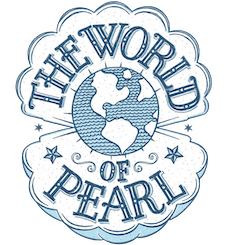We believe no one should have to endure wearing fake pearls. Therefore we focus on 100% genuine, real, authentic pearls. We will happily teach you how to spot imposters so that you don’t have to suffer fake pearls. But we know you might already have pearls and you are wondering, “Are these real or fake pearls?” So, let us help you figure out if those are real or fake pearls!
What is a fake pearl?
A fake pearl is any man-made pearl or any pearl that has NOT been created in nature. Personally, I don’t think they deserve to be called a “pearl” because some buyers get fooled into thinking that they are the real thing! People who sell these fake gems really dress up their description. Some people call them 100% genuine imitation pearls. Other people claim their fake pearls are the best because they are made with powder from real pearls. I am not buying it! Fake means fake! These fake pearls were not created by nature and do not share any of the qualities which make pearls special.
So, real versus fake, how do you spot fake pearls?
The Tooth Test:
Rub your pearls against your teeth. I personally like to run pearls along the bottom of my top teeth. You might even want to put them between your bottom and top teeth in a type of bite. They feel gritty. Now, the best way to really feel this sensation is to try it with both fake and real pearls. Those fake pearls slide right across your teeth. So, the best way to know if your pearls are real is to rub them across your teeth. Gritty is good! Gritty represents the interlocking crystals in the pearl and shows you those pearls are real!
Imperfectly Perfect!
One of the best ways to know if a pearl is real is to understand that pearls are rarely perfect! They are organic gems so they will come with small imperfections, marks, indentions or other spots. Have you ever seen a completely flawless pearl necklace? Me too! And it was fake. It is difficult and expensive and almost impossible to create an entire strand of flawless pearls. Now, ideally, you do not want huge, noticeable surface imperfections on your pearls however the best way to know if your pearls are real… look closely… there will be imperfections.
The Weight of Pearls
Many times I can tell if pearls are fake simply by their weight. Huge pearls will be heavy. If they aren’t, they may be the new fad of coated cotton balls made to look real. This identifier does not always work, though, because with the new painted glass beads on the market, they are weighting the “pearls” so they feel comparable to the real thing. You may have heard of Swarovski pearls. This is a really fancy name for fake pearls. Since they are made of glass, they will be heavy so this is one exception to the heavy rule. Once again, though, they look flawless, so you will not be fooled! Swarovski pearls are fake pearls with a fancy name.
Powdered Pearls
Now, I don’t recommend doing anything to your sensitive pearls that might lead to their degradation so I am not going to recommend this, but I did want to share it with you. You can rub two genuine pearls together and they will again feel gritty. If you rub a bit harder, a powder fine powder will form from the breakdown of the pearls. This will never happen with fake pearls, they will not create a fine powder when rubbed together. If they are coated, though, as many fake pearls are, they may rub off their coating.
Mamma’s Pearls
Sometimes just by simply knowing the ago of your pearls, you can guess whether they are real or not. Cultured pearls did not seriously hit the market until the 1920s. Until then, there were only natural pearls and they came with a hefty price tag! More cultured pearls made their way to the U.S. when soldiers returned from the war in the 1940s. So, if you have an old strand of Japanese pearls, usually graduated, these are most likely real. But throughout the 40s, 50s and 60s fake pearls were the rage. You know Jackie Kennedy’s ubiquitous pearl necklace? She wore it everywhere and it was fake. Real pearls were not as readily available in the mid-century. With the boom of freshwater pearls in the 1970s, 80s and 90s, real pearls were more readily available but they were not likely gem quality, round pearls. Instead they offered interesting shapes and color. Only with the 21st century boom in high quality freshwater pearls do you see more and more round, beautiful freshwater pearls. Which brings me to the point that pearls can come from freshwater or saltwater. Read more here…
Ask Us!
And yes, a final way to know if your pearls are real, just ask a pearl grader with The Pearl Girls. We do not offer appraisals but we will happily let you know if you have a strand of real pearls or not! We deal strictly with genuine pearls so you will never be fooled when purchasing your pearls from us!
Happy Pearl Shopping!
India
Founder of ThePearlGirls.com
I am a modern day treasure hunter who travels the world for gorgeous pearls and amazing adventures. I own a pearl jewelry and jewelry repair business, ThePearlGirls.com, with a cute retail store in Athens, GA. I also have a Pearl Travel business and travel blog at TheWorldofPearl.com.


